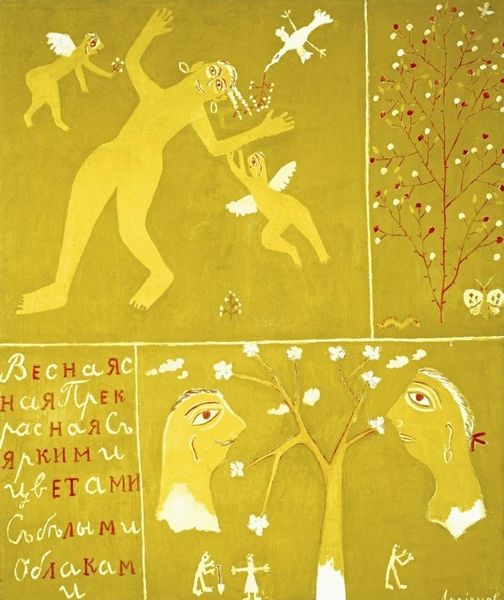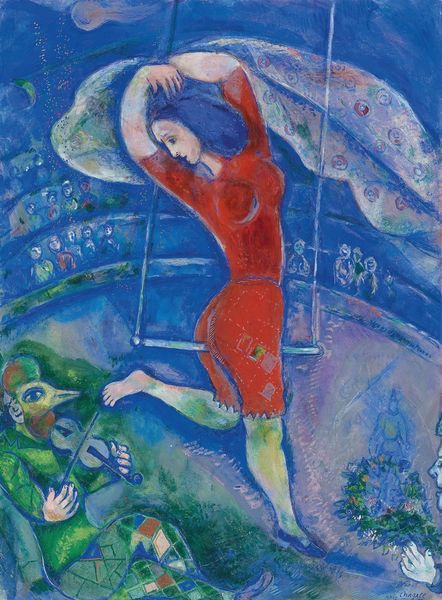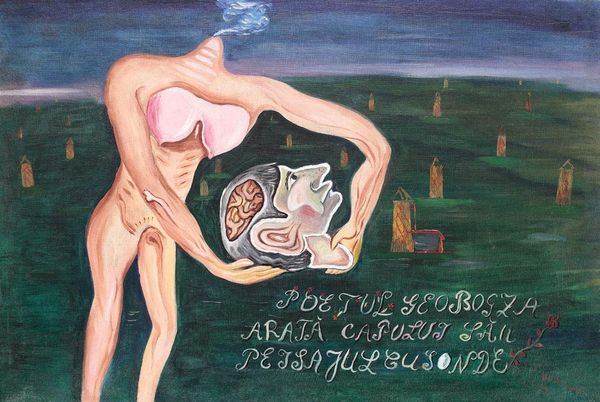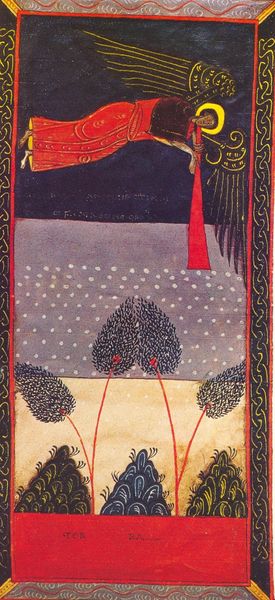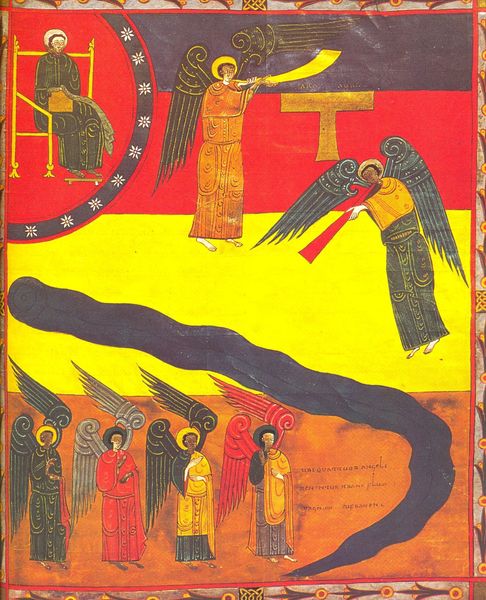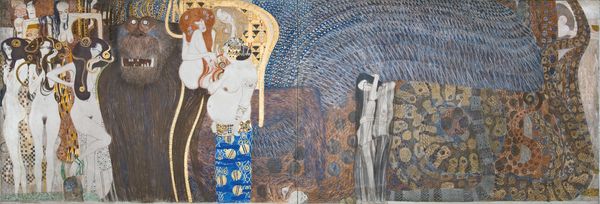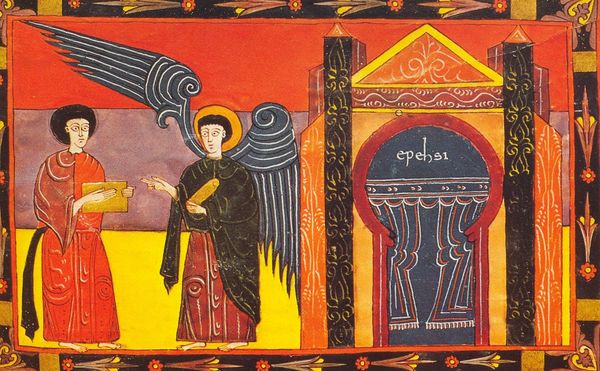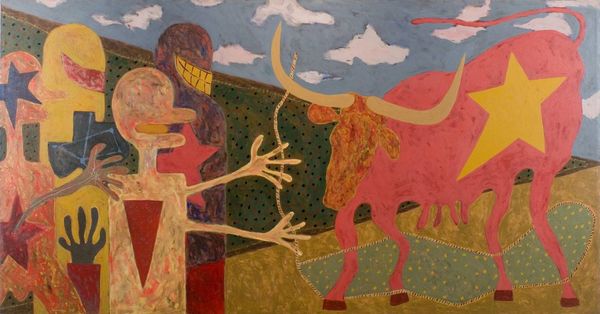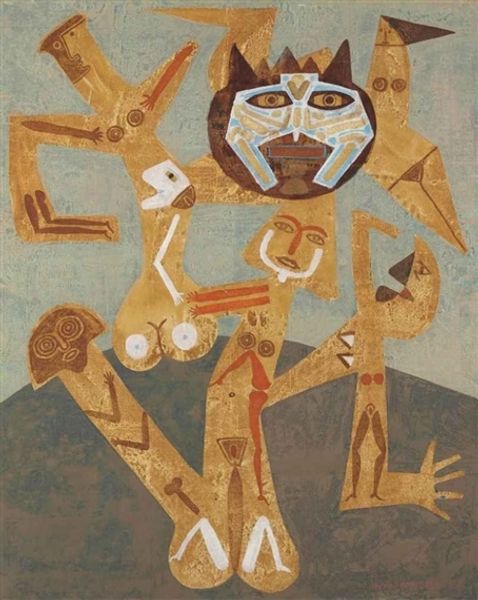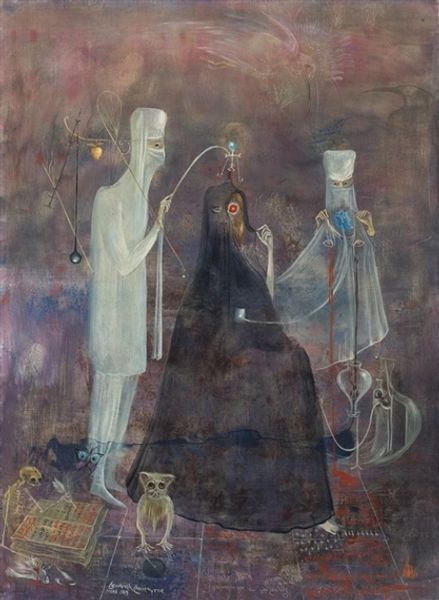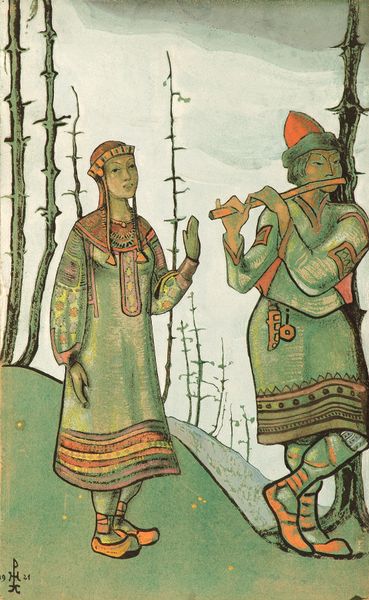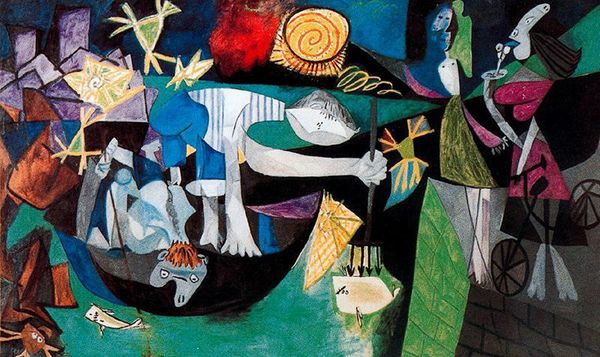
painting, watercolor
#
painting
#
landscape
#
rayonism
#
figuration
#
watercolor
#
folk-art
#
expressionism
#
naive art
#
russian-avant-garde
Copyright: Public domain US
Curator: What a captivating piece! This is Mikhail Larionov’s "Autumn," created in 1912. It’s a watercolor painting showcasing his unique approach to figuration and landscape. Editor: The heavy use of blue immediately strikes me. It creates an almost dreamlike quality, despite the seemingly simple forms. Curator: Indeed. Larionov was deeply interested in folk art traditions. The rendering of the human figures and the simplified landscape elements are all testaments to that inspiration. It also links to his broader engagement with Russian avant-garde movements which saw value in exploring national identity through reimagining its past. Editor: Look at the layering of blues. It feels almost tactile, built up meticulously to create depth. This painting, in a way, elevates watercolor from a sketch medium to something quite substantial and potent. It's fascinating to see how he treats it almost as pigment here, blurring lines between painting and maybe even craft. Curator: Absolutely. The composition is fascinating, segmented into distinct sections that almost feel like different scenes on one canvas. Consider the relationship between the larger figure at the top and the smaller figures at the bottom. I see a complex dynamic of scale, echoing perhaps hierarchical relationships found in traditional societies. Furthermore, that figure can also be seen as a deity. It speaks to something almost cosmic in its intention. Editor: I think your analysis is astute. I can’t help but be intrigued by the text integrated into the painting itself; this brings questions of labor to the forefront: did Larionov also participate in preparing the watercolor material or mix it himself, since it looks custom made to accomplish his visual intent? Curator: I’m struck by how “Autumn,” even with its straightforward title, prompts discussions of cultural and societal meanings intertwined within artistic expression. It almost beckons to examine identity and representation through art’s mirror. Editor: For me, it emphasizes the beauty in process, a reminder that materials and how artists engage them hold untold possibilities that bridge realms typically regarded as "high" or "low." Curator: It certainly challenges those art categories through folk inspired elements with its avant-garde treatment! Editor: Indeed!
Comments
No comments
Be the first to comment and join the conversation on the ultimate creative platform.
